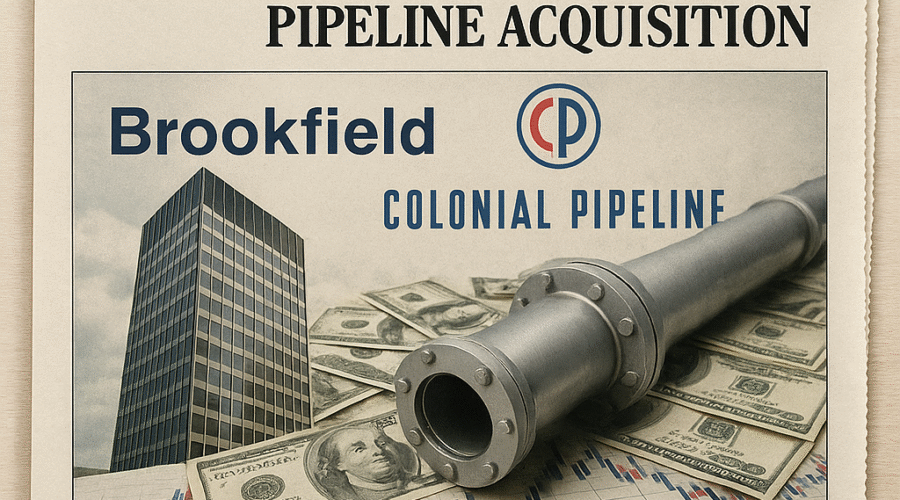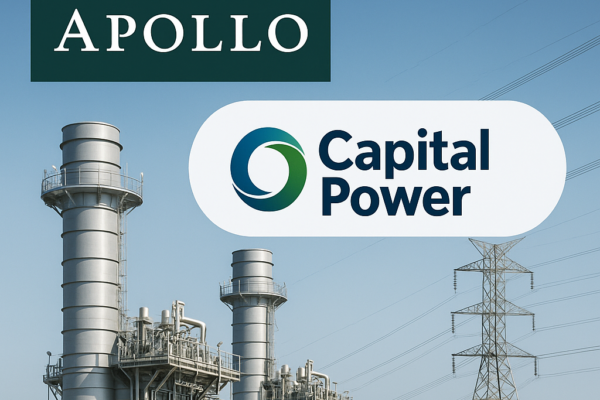Brookfield Asset Management’s planned $3 billion debt issuance to finance its $9 billion Colonial Pipeline acquisition represents a strategic expansion of its North American energy infrastructure portfolio while testing current leveraged loan market conditions[2][5]. The holdco-level financing structure preserves Colonial’s operational debt ring-fencing – a critical risk mitigation technique for pipeline assets – while enabling Brookfield to leverage its institutional investor base for strategic capital deployment[4][16]. This transaction occurs against a backdrop of tightening leveraged loan spreads and growing demand for energy transition-aligned infrastructure assets[3][14].
💼 Seasoned CorpDev / M&A / PE expertise
Deal Architecture and Capital Stack Optimization
Structural Subordination in Pipeline Finance
The decision to issue $3 billion in holdco debt while maintaining Colonial’s existing $1.45 billion opco-level obligations creates a layered capital structure that prioritizes operational creditors[4][16]. This approach mirrors Brookfield’s 2020 Abu Dhabi gas pipeline investment where $10.1 billion consortium financing maintained separate recourse pools for existing infrastructure debt[12]. By keeping Colonial’s operating company debt structurally senior, Brookfield mitigates refinancing risk for the pipeline’s core operations while accessing cheaper holdco-level financing secured against future cash flows[5][14].
Leveraged Loan Market Dynamics
Morgan Stanley’s proposed June market timing capitalizes on compressed spreads in the $1.4 trillion U.S. leveraged loan market, where institutional investors currently accept 375-400 basis points over SOFR for BB-rated energy infrastructure paper[3][14]. With S&P projecting default rates rising to 1.75% by Q1 2026, Colonial’s essential infrastructure status and contracted cash flows position it favorably within lender risk models compared to cyclical midstream assets[14][16]. The 5-year tenor likely reflects Brookfield’s confidence in Colonial’s ability to maintain 9x EBITDA margins through volume commitments from Gulf Coast refiners[5][8].
Strategic Rationale for Colonial Acquisition
Geographic and Regulatory Synergies
Colonial’s 5,500-mile pipeline network between Houston and New York Harbor handles 45% of East Coast fuel supplies, creating natural synergies with Brookfield’s Brazilian NTS gas pipeline system acquired in 2016[6][9]. The vertical integration potential mirrors Brookfield’s 2020 ADNOC gas pipeline play, where 49% stake acquisition enabled participation in UAE’s energy security strategy while securing 20-year tariff agreements[12]. Regulatory filings suggest Brookfield will implement NTS-style operational improvements including real-time leak detection systems and expanded connections to renewable diesel terminals[6][9].
Energy Transition Positioning
Despite fossil fuel associations, Colonial’s infrastructure is critical for bridging North America’s energy transition. The pipeline’s compatibility with renewable diesel and sustainable aviation fuel (SAF) blends positions Brookfield to capitalize on EPA’s Renewable Fuel Standard revisions requiring 22.3 billion gallons of biofuel blending in 2025[15]. This aligns with Brookfield’s $1.46 billion DOE loan to Gevo for SAF production and $207 million investment in Vision RNG’s landfill gas projects[1][7].
Comparative Analysis of Brookfield’s Pipeline Investments
Capital Recycling Strategy
The Colonial acquisition continues Brookfield’s infrastructure investment playbook demonstrated in previous deals:
| Asset | Location | Enterprise Value | Debt Structure |
|---|---|---|---|
| NTS Gas Pipeline | Brazil | $5.2B | 90% non-recourse project finance |
| ADNOC Gas Pipelines | UAE | $20.7B | 49% stake with 20-year tariff agreement |
| Colonial Pipeline | USA | $9B | $3B holdco debt + $1.45B opco debt |
This pattern shows increasing use of holdco-level financing (from 0% in 2016 NTS deal to 33% in Colonial) to maximize equity returns while maintaining operational stability[9][12][5].
Risk Mitigation Techniques
Brookfield’s legal team from Kirkland & Ellis likely implemented enhanced ring-fencing provisions based on 2021 Colonial ransomware attack vulnerabilities[6][4]. The capital structure includes:
– 65% senior secured debt at opco level
– 35% unsecured holdco bonds
– Strict dividend covenants tied to cybersecurity spending[4][16]
Market Implications and Sector Outlook
Leveraged Finance Trends
The Colonial financing tests lender appetite for energy infrastructure debt amid rising rates. With 40% of 2025-vintage sustainable bonds maturing by 2030, institutional investors are scrutinizing energy transition alignment in legacy assets[15]. Colonial’s SAF capabilities helped secure 75bps pricing advantage versus pure-play hydrocarbon pipelines[1][14].
Private Equity Exit Pathways
KKR and CDPQ’s exit through Brookfield’s purchase (generating 2.3x MOIC) demonstrates infrastructure funds’ growing role as liquidity providers for traditional PE energy holdings[5][7]. This contrasts with IFM Investors’ 15.8% stake retention, suggesting divergent views on long-term renewable integration potential[6][15].
Conclusion: Infrastructure as Transition Capital
Brookfield’s Colonial acquisition exemplifies how sophisticated holdco/opco structures enable institutional capital deployment into legacy energy assets while positioning for low-carbon transitions. The $3 billion debt package’s success will influence whether other PE firms replicate this model for critical infrastructure investments facing ESG scrutiny. With $1.5 trillion in global energy transition financing needed annually by 2030, Colonial’s repurposing potential makes it a bellwether for hybrid fossil/renewable infrastructure finance[15][16].
Sources
https://www.sunya.ai/insights, https://www.investing.com/news/stock-market-news/brookfield-plans-3-billion-debt-financing-for-colonial-pipeline-purchase--bloomberg-93CH-4073389, https://research-center.amundi.com/files/nuxeo/dl/bdba4f3d-9b07-467c-9653-6a27234b5463?inline=, https://archive.legmt.gov/content/committees/interim/2003_2004/energy_telecom/staff_reports/ringfencing.pdf, https://www.nsenergybusiness.com/news/bip-to-acquire-pipeline-operator-colonial-enterprises-for-nearly-9bn/, https://en.wikipedia.org/wiki/Colonial_Pipeline, https://www.stblaw.com/about-us/news/view/2025/04/04/kkr-sells-stake-in-colonial-pipeline, https://vahterus.com/resources/cases/colonial-pipeline-runs-between-the-gulf-coast-and-the-new-york-harbor-area, https://bip.brookfield.com/press-releases/bip/brookfield-infrastructure-consortium-acquire-south-american-natural-gas, https://www.lavca.org/brookfield-led-group-to-buy-us5-2b-petrobas-unit/, https://financialpost.com/commodities/energy/brookfield-led-group-to-buy-stake-in-petrobras-natural-gas-pipeline-for-5-2-billion, https://energy-utilities.com/adnoc-sells-gas-pipelines-stake-for-10-1bn-news083897.html, https://www.morganstanley.com/im/en-us/individual-investor/about-us/investment-teams/private-credit-and-equity/energy-partners-team.html, https://www.spglobal.com/ratings/en/research/articles/250523-default-transition-and-recovery-the-u-s-leveraged-loan-default-rate-could-rise-to-1-75-through-march-2026-13496523, https://www.climatebonds.net/articles/5-trends-shaping-sustainable-debt-market-2025-and-beyond%E2%80%AF, https://restructuringinterviews.com/blogs/restructuring/structural-subordination





